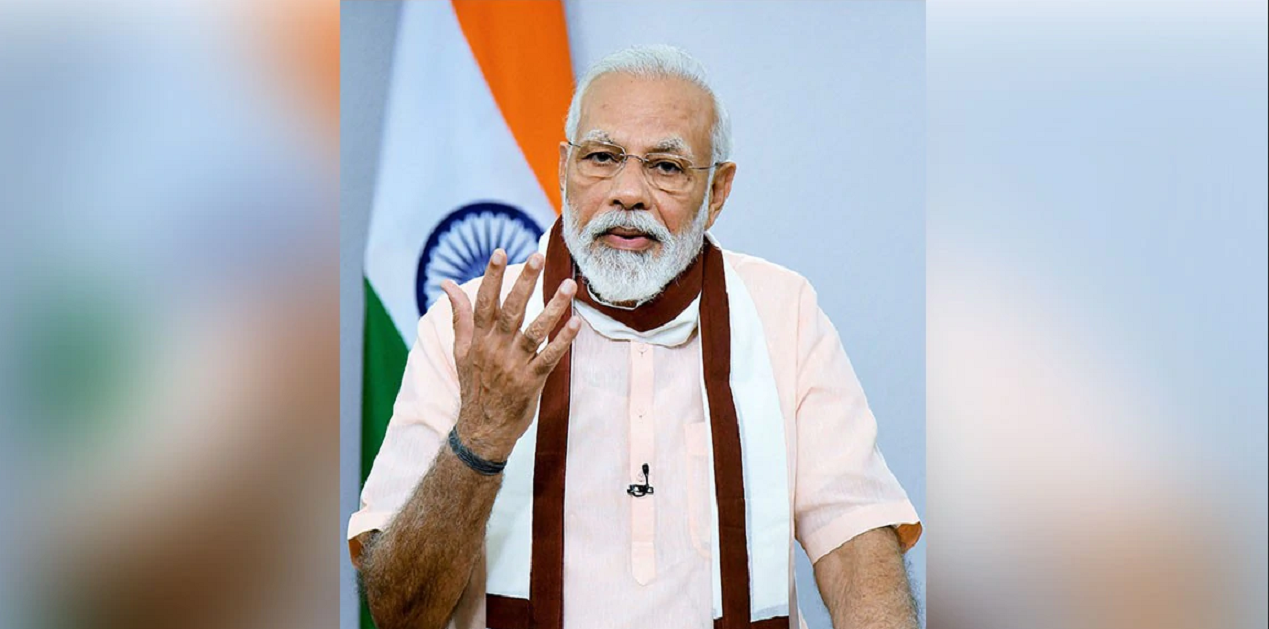This article is based on the inputs and views of notable experts from Confederation of Indian Industry (CII) and Vivekananda International Foundation (VIF), expressed in a webinar organised by the VIF on May 25, 2020. The esteemed panel was moderated by Dr.Janmejaya Sinha- Chairman-India, Boston Consulting Group; and included Mr. Vinayak Chatterjee –Chairman, Feedback Infra Pvt. Ltd; Mr. R.Mukundan -Managing Director, Tata Chemicals Ltd.; Mr. B. Thiagarajan – Managing Director, Blue Star Ltd.; and Dr. Arvind Gupta – Director, Vivekananda International Foundation.
The Prime Minister’s announcement on May 12, 2020, of a Rs. 20 lakh crores ‘Aatmanirbhar Bharat’ package for mitigating the impact of COVID-19 and reviving growth, marks an inflection point in Indian economic history. The PM’s impetus to self-reliance as a crucial tenet for building a new India has been expounded by the subsequent sector-wise announcements made by the Finance Minister. The path towards self-reliance for India would entail developing its strengths in critical areas like defence and security, along with re-setting the terms on which it engages with the world. At the same time, India has to maintain openness in order to contribute towards shaping the emerging new world order as a key economic power.
Navigating the new, post-COVID world order would require synergised action in three major areas, namely – healthcare, economy and geo-politics. The pandemic has brought to surface the shortcomings of healthcare systems globally, and the most urgent need is to ensure access and availability of rapid testing, vaccines, medical equipment, and trained medical & para-medical personnel for vast populations.
On the economic front, the disruption caused due to the pandemic is estimated to cost the world economy $10 trillion in 2020 alone. India’s GDP growth rate is projected to fall to 1.9% in FY20. While the government has provided immediate relief to the poor by means of the Rs.1.7 lakh crores ‘PM Gareeb Rahat Package’ announced on March 26, 2020, larger issues still remain concerning the financial sector, depleting aggregate demand, and infrastructure spending among other things.
It is against this context that the special economic package needs to be understood. According to industry experts, the provisions under the special economic package can be classified under three broad heads: (i) Policy Reforms (ii) Liquidity Infusion, and (iii) Demand Stimulus. Under the first category, the government has announced several long-pending reforms, especially in the agriculture and power sectors. These coupled with policy changes in the MSME sector would work positively towards long-term growth of domestic producers in these sectors.
Further, the government along with Reserve Bank of India, has used a mix of tools to infuse liquidity- these include reduction in interest rates, moratoriums on payments, and central and state guarantees for the MSME sector. While these have helped to safeguard the most vulnerable sections of population in the immediate short-run, more intensive measures have to be undertaken to address the demand side shock to the economy. The package now should be focussed towards the third major head, i.e. providing massive demand stimulation. In order to stimulate demand and generate employment, the Government needs to front-load infrastructure funding through the Aatmanirbhar package.
Investment in Infrastructure
This demand stimulation, experts suggest, should be carried out through investment into large-scale public works programs. These infrastructure projects across the country would not only work towards reducing transactional costs and enabling the business environment, but also address problems of large-scale unemployment, reverse migration of informal sector labour, and rural distress. Additionally, the multiplier effect of investments in infrastructure is huge for sectors like steel, cement, and construction equipment.
To this end, the first action point should be to identify and implement shovel-ready projects in rural areas for providing immediate livelihood relief to large number of displaced informal sector workers. Institutions such as the NHAI and urban-civic bodies need to be empowered with liquidity and decision-making authority, for undertaking these large-scale projects such as construction of highways, and housing projects for urban poor, irrigation projects and expansion of piped water supply under the ‘nal-se-jal project’, et cetera. The skills and expertise of the private sector should be utilized by partnering with industry associations such as the CII for undertaking the implementation of these projects in a fixed time period.
Further, the construction of Coastal Economic Zones (CEZs) with specialized tax and regulatory incentives must be expedited for attracting foreign direct investments. These would promote labour-intensive exports and provide large operational package for public works. Experts suggest building the first few of these CEZs in Paradip, Vishakhapatnam and Tuticorin on the east coast, and Kochi, Goa and Kandla on the west coast.
Reforming the Business Environment
The disruption caused by the pandemic has brought with itself a window of opportunity for India to develop its indigenous manufacturing capabilities and reduce dependence on China. Even before the Pandemic erupted, Multi National Enterprises (MNEs) faced with increased operating costs in China were looking for alternate destinations for setting up manufacturing capabilities. The Pandemic has expedited this outflow by bringing to surface the dangers of putting all the eggs in a single basket. Companies are now hedging against this risk by diversifying and shiftingtheir supply chains based on the ‘China-plus-one’ formula.
In the chemical industry, for instance, China controls about 50% of the global chemical intermediates’ market. India, with a competitive chemical sector, has the potential of attracting this $20-$30 billion opportunity and emerging as a global supplier. Similarly, enhanced participation in global supply chains in other sectors collectively presents an opportunity of an estimated $1-2 trillion for India over the next five years.
However, in order to leverage this opportunity it is imperative upon the government to reduce costs and remove the many impediments for improving the ease of doing business. Long-awaited reforms in the areas of land, labour, and logistics are needed. While the centre has implemented reforms in the past few years to improve the business environment, much work is needed at the level of states. Additionally, regulatory and environmental clearances and approvals need to be expedited to signal and open and inviting ecosystem for investments. The centre needs to bring about an incentive based model for states to initiate reform in this regard.
Similarly, self-reliance in consumer electronics, engineered capital goods, and medical equipment sectors is crucial in the post-COVID era. Currently private sector companies in these sectors in India source almost 60% of the components directly or indirectly from China. However, capital investment for indigenization of production is hampered due to poor demand currently. The government can encourage Indian companies to identify and jointly produce components through an SPV model. Further, while technology development is not a problem, companies in India face problems relating to high landed costs that need to be brought down immediately by investing in strengthening logistical linkages.
On the same lines, India needs to encourage the Indian entrepreneur, especially the small-scale entrepreneur towards scaling up and become self-reliant. The trust deficit between regulatory bodies and entrepreneurs needs to be bridged. While strong reporting and transparency rules can be set in place for businesses, a largely open environment should be put in place in order to foster a trusting ecosystem and unleash the Indian strength of frugal innovation.
Exporting Services
Achieving self-reliance in labour-intensive areas is also imperative for India to leverage its vast demographic dividend. India needs to focus on areas of strengths such as medical services exports in the post-COVID era, to become the healthcare provider of the world. Building sound and affordable digital infrastructure would enable non-skilled and semi-skilled workers to upskill and engage in the mainstream as service providers in areas such as education, healthcare, and hospitality.
Affixing Social Responsibility
In an effort to minimise economic loss due to the movement restrictions put in place during the initial phase of the COVID-19 outbreak in India, the central government has started easing the lockdown in a phased manner. With the economy opening up however, the number of infected cases is expected to go up in the country. In order to contain the spread of coronavirus, the Prime Minister in his speeches, has urged the people to practice precautions in public areas.
Going forward, it is essential to fix personal accountability on individuals to bring about long-term behavioural change that would minimize the impact of the virus until effective vaccination of the population is carried out. People’s participation can be channelled through creation of taskforces at workplaces, RWAs, and schools to ensure effective implementation of social distancing measures, wearing of masks, and for maintaining sanitation. Mandatory social service efforts can be directed towards this end.
Alternate Funding Mechanism
Increased public spending for stimulating demand and mitigating the post-COVID economic shock also poses the challenge of a rising fiscal deficit and high debt-to-GDP ratio for the Government. As an alternative funding mechanism to this, Mr Vinayak Chatterjee recommended the creation of an off-budget consolidated fund, a ‘National Renewal Fund’. The fund would be capitalised at fairly high-levels of approximately Rs. 20-30 lakh crores, raised in a 50-years format through mixed funding by the RBI (~60%) and foreign borrowings (40%). Not only would this enable the Union government to increase its infrastructure spending while maintaining its obligations under the FRBM Act, but also mobilize funds for attaining self-sufficiency in the areas of high-technology sectors and climb up the value chain. The government needs to immediately conceive and work out the details of such an alternative fund.
(The paper is the author’s individual scholastic articulation. The author certifies that the article/paper is original in content, unpublished and it has not been submitted for publication/web upload elsewhere, and that the facts and figures quoted are duly referenced, as needed, and are believed to be correct). (The paper does not necessarily represent the organisational stance... More >>
Image Source: https://cdn.narendramodi.in/cmsuploads/0.08546700_1589351206_1155-548-crop-pm-modis-address-to-the-nation-on-covid-19-related-issue-6.jpg











Post new comment